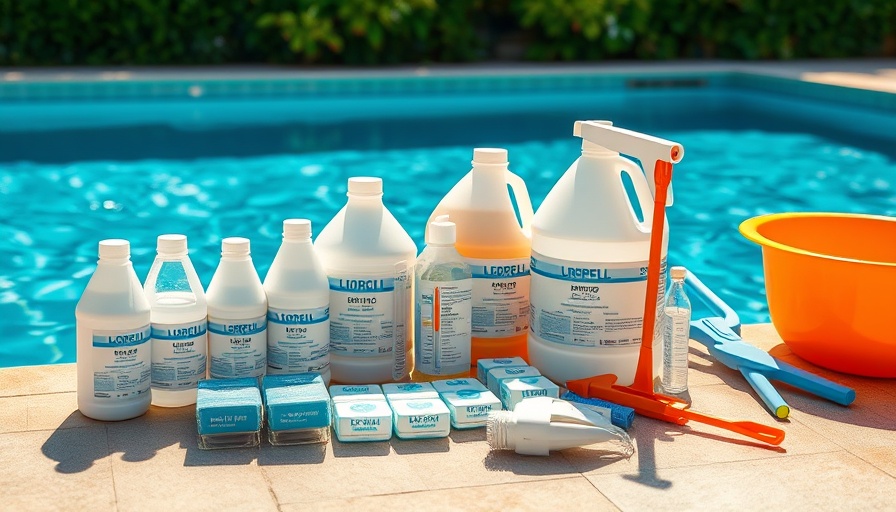
Understanding the Importance of Pool Water Chemistry
For any pool owner, the health of your swimming pool extends beyond aesthetics; it is fundamentally about ensuring the water chemistry is balanced and safe. Poorly managed pool chemistry can lead to a host of unpleasant issues, from cloudy water to health hazards like bacteria. Understanding pool chemicals is not just beneficial—it's essential.
Key Pool Chemicals: Your Essential Toolkit
When it comes to maintaining a safe swimming environment, familiarity with key pool chemicals is crucial. Each chemical serves a unique purpose, and together, they ensure your pool remains clean and inviting.
Chlorine: Acting as the primary sanitizer, chlorine effectively eliminates harmful microorganisms. Regular testing should maintain chlorine levels between 1.0 and 3.0 parts per million (ppm) to efficiently safeguard against contamination.
pH Levels: A well-balanced pH level, typically between 7.2 and 7.8, is vital for maximizing chlorine’s effectiveness. Out-of-range pH not only diminishes sanitation efforts but can also lead to skin irritation and equipment corrosion.
Alkalinity: Acting as a buffer for pH, total alkalinity levels between 80-120 ppm help stabilize water chemistry. Low alkalinity can cause erratic pH changes, while high levels can lead to scale buildup and clarity issues.
Calcium Hardness: Essential for protecting your pool surfaces, maintaining calcium hardness between 200-400 ppm is crucial. Insufficient calcium can corrode surfaces, while excessive levels might cause scaling.
Cyanuric Acid (CYA): CYA acts as a sunblock for chlorine, preserving its effectiveness in outdoor pools. Maintaining CYA levels between 30 and 50 ppm can significantly enhance your sanitation efforts.
Algaecides and Shock Treatments: Utilizing these additional chemicals periodically combats algae blooms and helps maintain crystal-clear water. Shock treatments, often used to quickly address contamination, form an integral part of your maintenance cycle.
Tips for Maintaining a Safe and Balanced Pool
Consistency is the backbone of effective pool management. Here are some practical tips to keep your water balanced and safe:
- Regular Water Testing: Ensure you regularly test all chemical levels at least once a week, adjusting for usage spikes and seasonal changes.
- Timely Adjustments: Never hesitate to adjust chemical levels as soon as they fall outside the recommended range.
- Circulate Water Effectively: Running your pump and filter regularly keeps your chemicals circulating evenly and removes debris.
- Regularly Clean Your Pool: Skimming debris, brushing walls, and vacuuming should be routine to maintain water quality.
- Weekly Shocking: Regularly shock your pool to eliminate contaminants effectively.
The Bigger Picture: Health and Safety
Understanding pool chemicals transcends simple maintenance; it encompasses the health and safety aspects crucial for a pleasant swimming experience. Regular chemical management not only enhances water clarity but protects pool users from potential health risks. Safety should never be sacrificed for convenience.
Conclusion
Investing time to learn and implement effective pool chemistry management pays off. By understanding the roles of key chemicals and following maintenance routines, pool owners can ensure their swimming environments are safe, clean, and inviting. Remember, the true joy of swimming lies in knowing your pool is a sanctuary, free from harmful bacteria and deliverable as a refreshing experience every time. Take the proactive steps today to create a pool that you, your family, and friends can safely enjoy.
 Add Row
Add Row  Add
Add 




Write A Comment